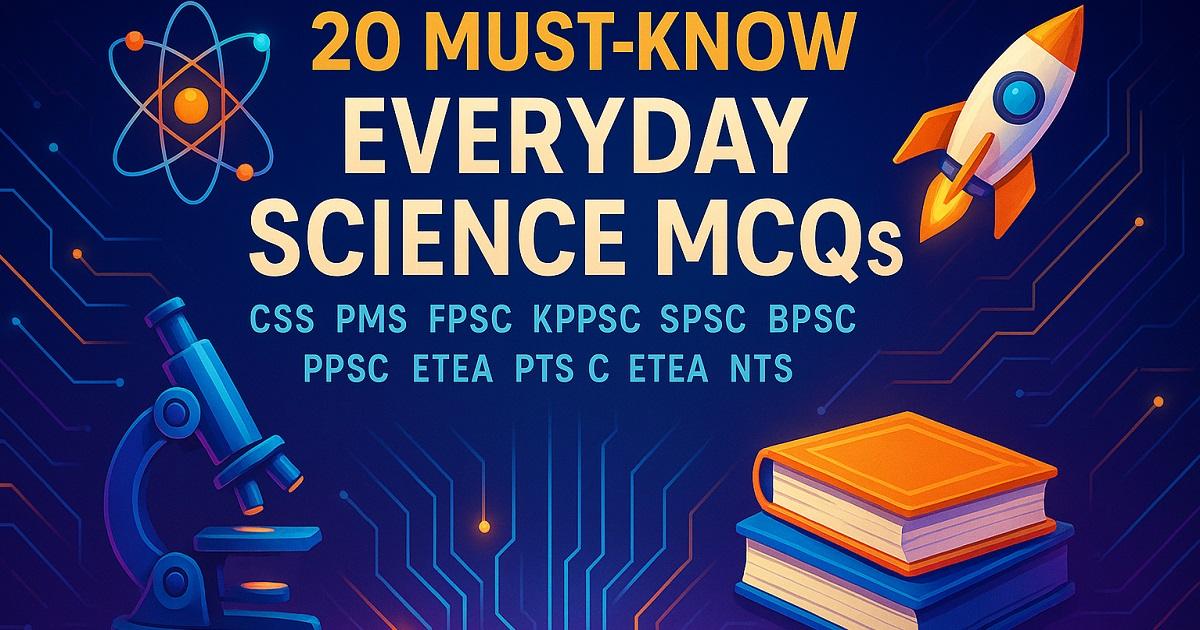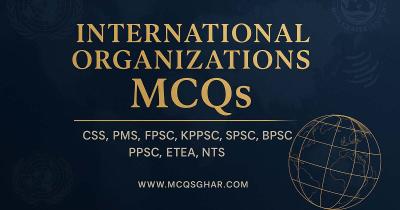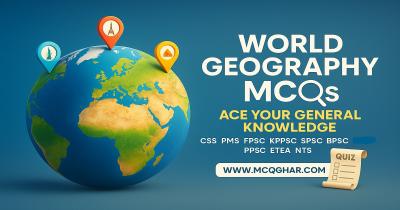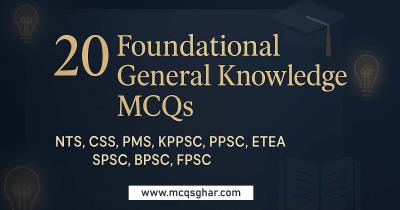بِسْمِ اللَّهِ الرَّحْمَنِ الرَّحِيم
20 Must-Know Everyday Science MCQs for NTS, CSS, PMS, KPPSC, PPSC, ETEA, SPSC, BPSC, and FPSC Tests
Are you preparing for competitive exams in Pakistan like the NTS, CSS, PMS, KPPSC, PPSC, ETEA, SPSC, BPSC, and FPSC? A strong grasp of Everyday Science is crucial for success. These exams frequently test candidates on fundamental scientific concepts that apply to our daily lives.
This post provides 20 essential MCQs in Everyday Science, complete with answers. These questions have been curated based on an analysis of past papers to ensure they are relevant and high-yield. Test your knowledge and boost your preparation with these MCQs!
1. The chemical formula for common salt is:
- H₂O
- CO₂
- NaCl
- C₆H₁₂O₆
Answer: NaCl
2. What is the main component of natural gas?
- Methane
- Ethane
- Propane
- Butane
Answer: Methane
3. The instrument used to measure atmospheric pressure is the:
- Thermometer
- Barometer
- Ammeter
- Hydrometer
Answer: Barometer
4. Which part of the human eye is responsible for controlling the amount of light entering it?
- Retina
- Cornea
- Pupil
- Iris
Answer: Iris
5. A deficiency of Vitamin C in the human body can cause:
- Rickets
- Scurvy
- Night blindness
- Beriberi
Answer: Scurvy
6. What is the process by which plants prepare their food?
- Respiration
- Photosynthesis
- Transpiration
- Germination
Answer: Photosynthesis
7. The 'powerhouse of the cell' is the:
- Nucleus
- Ribosome
- Mitochondrion
- Cell Membrane
Answer: Mitochondrion
8. Sound waves cannot travel through:
- Air
- Water
- Steel
- Vacuum
Answer: Vacuum
9. The unit for measuring electric current is:
- Volt
- Watt
- Ohm
- Ampere
Answer: Ampere
10. Which gas is most abundant in the Earth's atmosphere?
- Oxygen
- Carbon Dioxide
- Nitrogen
- Argon
Answer: Nitrogen
11. The study of earthquakes is known as:
- Geology
- Seismology
- Ecology
- Ornithology
Answer: Seismology
12. Bronze is an alloy of copper and:
- Zinc
- Tin
- Nickel
- Aluminum
Answer: Tin
13. Which planet is known as the "Red Planet"?
- Venus
- Mars
- Jupiter
- Saturn
Answer: Mars
14. The universal recipient blood group is:
- A+
- B+
- O-
- AB+
Answer: AB+
15. What is the pH value of pure water?
- 5
- 7
- 9
- 14
Answer: 7
16. The force that opposes the motion of one object over another is called:
- Gravity
- Friction
- Momentum
- Inertia
Answer: Friction
17. The human body has how many bones?
- 206
- 212
- 300
- 198
Answer: 206
18. The lens used to correct farsightedness (hypermetropiis:
- Concave lens
- Convex lens
- Cylindrical lens
- Biconcave lens
Answer: Convex lens
19. What is laughing gas?
- Nitrous Oxide
- Carbon Monoxide
- Sulfur Dioxide
- Hydrogen Peroxide
Answer: Nitrous Oxide
20. The speed of light is approximately:
- 300,000 km/s
- 150,000 km/s
- 500,000 km/s
- 100,000 km/s
Answer: 300,000 km/s




